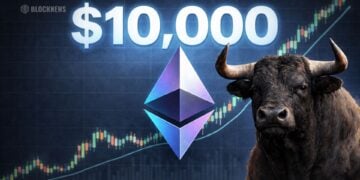- Bitcoin halving could be a ‘sell-the-news’ event, at least for a few months
- Analysts expect BTC price to surge leading up to the halving but dip below its pre-halving level within 90 days after the event
- Selling pressure from miners offloading BTC to cover costs is expected to contribute to the post-halving price correction
The Bitcoin halving is one of the most anticipated events in the crypto market. Occurring every four years, the halving reduces the block rewards issued to miners by 50%. Many expect this event to drive up the price, but some analysts argue it could be a sell-the-news event instead.
Bitcoin’s Previous Halvings
There have been three halvings so far. In 2012, the block reward dropped from 50 BTC to 25 BTC. In 2016, it fell again from 25 BTC to 12.5 BTC. At the last halving on May 11, 2020, it declined from 12.5 BTC to 6.25 BTC.
Analysts Predict a Post-Halving Price Decline
Analysts at Steno Research believe this halving will also be a sell-the-news event. They point to the 2016 halving when Bitcoin’s price remained below its pre-halving level for 90 days afterwards, declining 84% on day 90.
Steno expects Bitcoin‘s price to surge leading up to the halving. However, they predict it will then dip below the halving price within 90 days as miners sell their coins. This sell pressure from miners trying to cover costs contributes to Bitcoin’s post-halving price correction.
Bullish Factors on the Horizon
However, Steno believes once the initial sell pressure subsides, the halving’s true bullish potential will emerge. They argue the “weak hands” will exit, allowing for renewed upward momentum.
Other analysts concur, saying the repricing from reduced issuance will drive prices higher as new demand enters. While short-term volatility is expected, the halving could bring increased interest and growth to the broader crypto ecosystem long-term.
Conclusion
While analysts debate whether the halving will drive immediate gains or declines, the long-term bull case remains intact. Reduced issuance paired with growing demand points to higher prices. But in the short-term, traders should prepare strategies for both up and down scenarios around this major event.














